In-Depth with the Windows 8 Consumer Preview
by Andrew Cunningham, Ryan Smith, Kristian Vättö & Jarred Walton on March 9, 2012 10:30 AM EST- Posted in
- Microsoft
- Operating Systems
- Windows
- Windows 8
As soon as the setup process is finished, you’re presented with your first look at Windows 8’s primary innovation: Metro. This new UI, which originated in Windows Phone 7 and has since been extended to the Xbox 360, is the Wave of the Future at Microsoft, and it’s part and parcel of Windows 8. There is no classic Start menu to fall back on. There’s nothing built-in to the OS that allows you to disable it or boot to the desktop by default (though surely various hacks will enable this if they haven’t already). Metro is here, and if you use Windows 8 you’ll have to come to terms with it.
That’s because Microsoft is going a step further than Apple with regards to its operating systems: while Apple is busy porting iOS features and characteristics to a desktop operating system that is still recognizably OS X, Microsoft insists that the tablet is just another kind of PC, and to that end is building a unified OS for both tablets and traditional PCs. Microsoft tablets (whether running Windows 8 or Windows on ARM) will run the same core software as PCs, will be able to run many of the same apps as PCs, and (most importantly for Microsoft’s ecosystem of enterprise users) can be managed using the same tools as PCs. We’ve known for years that the traditional Windows desktop doesn’t work well on tablets, but does an interface designed for touch also work with a mouse and keyboard?
 Metro, with its large fonts, bold colors, and large buttons was designed to be touched, and I think once we get some tablets designed for Windows 8 people are going to warm up to it. It’s well thought-out and with a little polishing will stand up well to iOS and Android in terms of features, and in terms of aesthetics it's already there—animations are fluid and attractive, and nice touches like a volume overlay (see right—finally!) bring an extra level of modern polish to Windows.
Metro, with its large fonts, bold colors, and large buttons was designed to be touched, and I think once we get some tablets designed for Windows 8 people are going to warm up to it. It’s well thought-out and with a little polishing will stand up well to iOS and Android in terms of features, and in terms of aesthetics it's already there—animations are fluid and attractive, and nice touches like a volume overlay (see right—finally!) bring an extra level of modern polish to Windows.
Brian Klug and Ryan Smith talked a bit about using Metro on a tablet in their piece on September’s Windows 8 Developer Preview, a process which is more or less the same in the Consumer Preview, so what I’ll be focusing on here is the general layout and function of Metro in the Consumer Preview, and my experience using it with a keyboard and mouse.
Introducing Metro
We’ll start with the entry point: the new login/lock screen. In previous Windows versions, this screen told you nothing about the computer—it was simply a gateway, and as such it either showed you a list of user accounts on the computer or displayed a CTRL + ALT + DELETE prompt with username and password fields. In Windows 8, the lock screen shows you the date and time and your current battery life and network connectivity status, set against a user-configurable background. Other Metro apps, like Mail and Messages, can also be configured to display status and notification messages on the lock screen. The look is reminiscent of most tablets and smartphones, but its big, high-resolution, striking images reminded me more of the Kindle Fire than anything. It’s a nice effect.
Press any key on your keyboard and the login image will slide upward, revealing the traditional Windows name and password fields. Authenticate, and you’ll be looking at the Metro-style Start screen.
Tiles for Metro-style apps are big and colorful, and can usually be set to two sizes, a smaller square that allows for two tiles to sit side by side in a column, and a longer rectangle that spans the entire column. Metro columns on the Start screen will expand or contract to fill all of the screen resolution available to them, as evidenced in the screenshots above and below, and your mouse or trackpad’s vertical scrolling function will let you move left and right (horizontally, I know) through all of your apps. You can also scroll by grabbing the scrollbar at the bottom of the screen, or by moving your mouse pointer all the way to the left or the right of the screen.
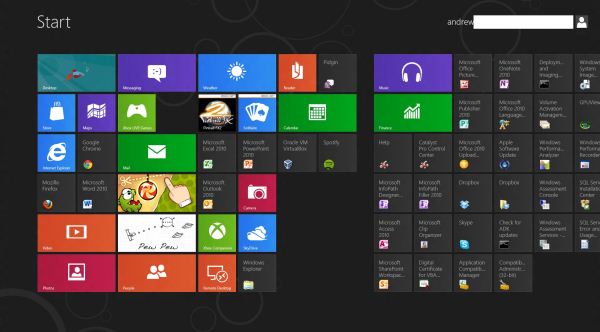
Displays with more pixels can display more items
Above, you can see most of what constitutes a Metro page: tiles of apps lined up into neat columns. Tiles can be moved around at will, and will try their best to rearrange themselves dynamically. The wider gap between two of the columns is a divider between “pages” of apps. There is no limit to the horizontal size of pages, and you can freely drag tiles to either side of these wider divides.
Right-clicking a Metro app will bring up a list of actions at the bottom of the screen—most Metro tiles will let you shorten or lengthen them, remove them from the Start screen, or uninstall them.
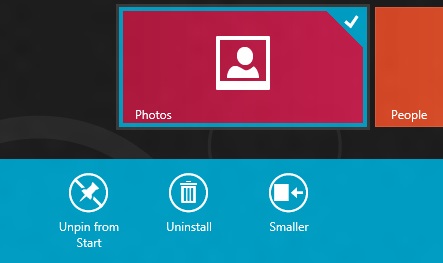
Standard desktop programs also show up on the Start screen as rather unglamorous-looking gray tiles that show the name of the program and its icon. Left clicking on it will dump you to the desktop and open the app as it would open in older versions of Windows, and right-clicking will bring up that app’s standard right-click menu in the Metro style across the bottom of the screen, with the added option to uninstall the program without going into the Programs and Features control panel.
To add and remove desktop app icons from the Start screen, right-click them and then click “pin to Start.” Desktop apps can be pinned to and unpinned from the desktop taskbar and the Start screen from the desktop or from Metro, the first of many ways in which the two interfaces are integrated.
Windows Search can be invoked automatically from the Start screen if you begin typing. In Windows 8, there are three distinct search categories: Apps, which will display most Metro and desktop programs; Settings, which will search through the Metro and desktop control panels; and Files, which is self-explanatory. You can also search through any Windows Search-enabled Metro app, which you can see listed below the three main headings. I’d love to see a unified search group like we had in the Windows 7 Start menu, especially given the sometimes-blurry line between what appears in Settings and what appears in Apps, but search in Windows 8 is powerful and it’s fast, even using slower processors and mechanical HDDs.
All Metro apps, including the desktop, can be “snapped” to the left or right edge of the screen, which lets one app use up about a fifth of the screen while another app uses the remaining space—I’ve seen this called “Metro Snap” and that’s how I’ll refer to it for the rest of the article. This is especially useful for things like Twitter or messaging clients that work well with a single vertical strip of screen space. Metro Snap will only work on panels that are 1366x768 or higher—anything smaller has too few horizontal pixels to make effective use of the feature—but the Windows desktop’s Aero Snap features will continue to work as they did in Windows 7.
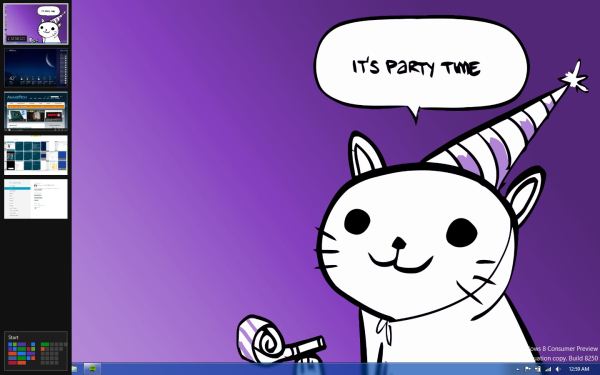
Party Cat knows when it is time to party. Also, the app drawer is on the left.
Metro has a few menus that can always be brought up no matter what app you’re using: the left edge of the screen is for an application drawer (above), which serves a function similar to the application switchers in iOS and Android. It shows all of your currently running apps and allows you to either switch to them from the currently running app or close them. The desktop will show up in the application drawer as a single item regardless of how many programs you have running on it, and while you can “close” it, this only makes the tile vanish from the drawer, and won’t close any of the programs running on the desktop.
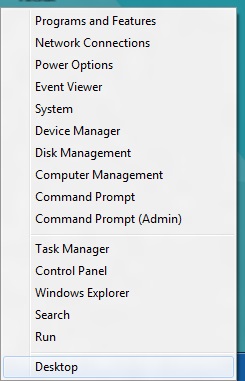
Update: Several readers have pointed out that right-clicking in the lower left corner of the screen brings up a mini-Start menu of sorts, where the Explorer, Search, the Run dialog box and several control panels can be accessed more easily. Thanks to all who sent this in!
The right edge of the screen is for Charms (above), Microsoft’s name for the buttons that let you access several high-level settings and features. The Charms are, from top to bottom:
- Search, which brings up the Search menu (which, remember, can also be invoked by typing from the Start screen). The default search view is Apps.
- Share. While in a Metro app like Photos, you could use this charm to send a picture to someone using another Metro app like Mail.
- Start, which brings up the Start screen.
- Devices, which brings up attached devices like printers and extra monitors and gives you some configuration options for them—for instance, it will allow you to change your display settings if you’ve got a second monitor or projector attached, and it will bring up a Print menu if you click an attached printer. This charm is context-sensitive—if there’s nothing in your app to print (or if the app doesn’t support it), for example, any printers attached to your computer won’t show up in the menu as a selectable option.
- Settings. This brings up both general settings and options for the currently-running application as well as some system-wide settings like brightness, volume, notifications, language, network connectivity, and shutdown options. The “More PC Settings” link brings up the system-wide Metro control panel, where one can control things like the lock screen and Metro backgrounds, your PC’s refresh and reset functionality, and a few other settings.
Screen resolution requirements
As we’ve discussed, using Metro Snap requires a screen resolution of at least 1366x768, but there’s one more very important resolution requirement in Windows 8.
While working on my netbook, I quickly found that almost all Metro apps included in the Consumer Preview wouldn’t run on its 1024x600 display. After some research I found that, yes, Metro apps are only going to run on screens that are 1024x768 or higher. It’s important to give developers a minimum screen resolution to shoot for (and we may even see some tablets that use 1024x768 panels, given the precedent set by the iPad, the HP TouchPad, and others), but it means that users of PCs with smaller screens aren’t going to be able to use Windows 8’s defining feature (though the Start screen and system menus will still work just fine). This is too bad, since the limited amount of screen space on a netbook is a decent fit for Metro's simplified interface and full-screen apps.
Now that you know the basic features and layout of Metro, it’s time to teach you how to use it with a mouse and keyboard.


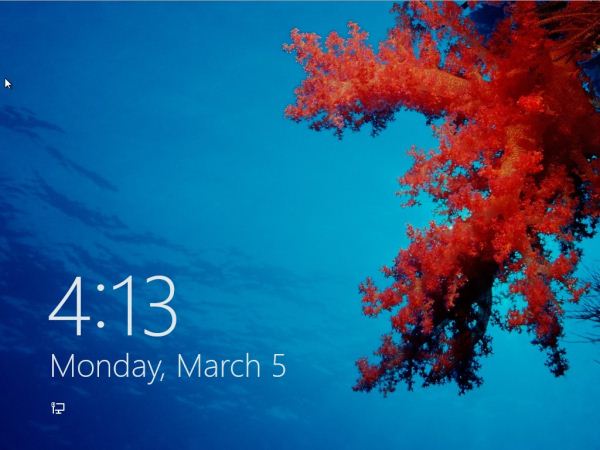
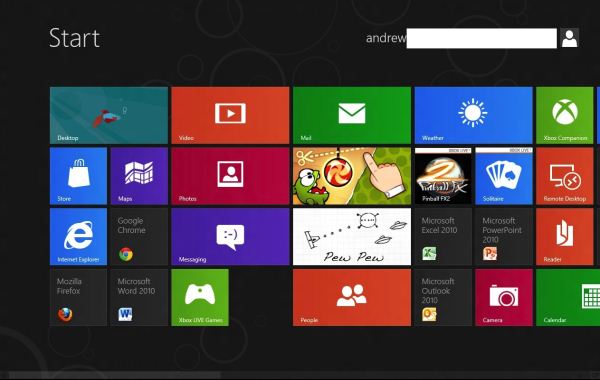
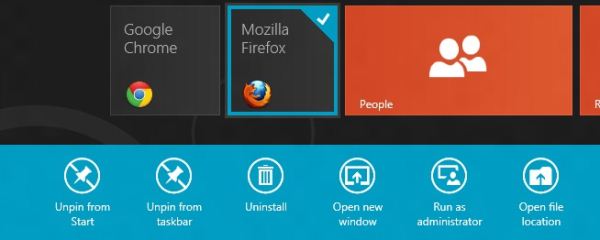
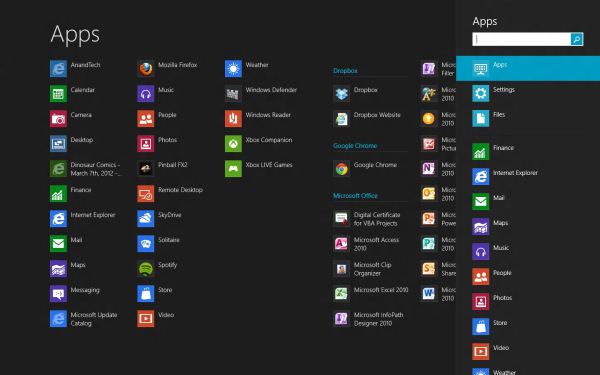
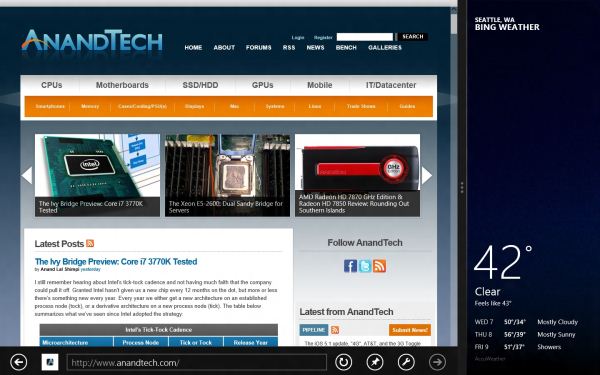
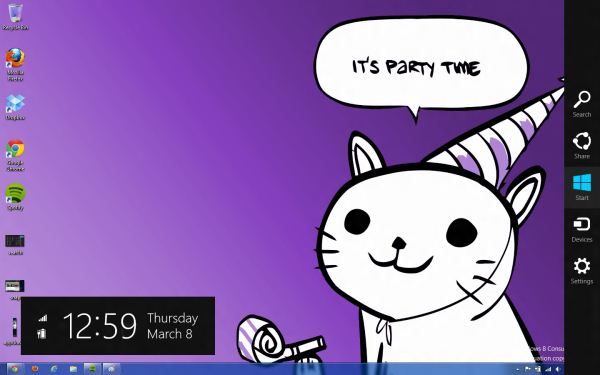








286 Comments
View All Comments
RavnosCC - Monday, March 12, 2012 - link
Very annoying till I went through Microsoft Help and discovered I will not be able to "snap" apps with my standard 4:3, 1280x1024 screen. boofRESHOiL - Monday, March 12, 2012 - link
This time around they added a great setting "Make Everything on my Screen Bigger".I didn't have to mess with loading my custom fonts, sizes, DPI, etc. to make my system visible from my couch on my 56" DLP. It did seem to make Metro Apps bigger but not desktop apps or the desktop experience.
Also, I've gone through a ton of small media keyboards and none are as easy as my remote. Since Metro, and all tablet/phone OSes are more geared towards consuming media/data rather than creating it... not saying they can't, but they do better at consuming, I thought for sure they would have accepted windows remote control commands in all the Metro Apps, to my surprise not one does. Of course the arrow keys and OK/Enter key work, but Info, Back, etc have no function in Metro Apps. Just a few changes and Metro becomes the best 10' full OS ever, mainly that it needs to work with remotes. Also, Media Center hasn't changed at all... I think it could use a little Metro and hope it does get it in the final product.
lilmoe - Monday, March 12, 2012 - link
I wonder how your video playback batter test would perform with well encoded HD videos with hardware-accelerated playback...I'm sure most of you guys know all about video encoding and decoding... GPU video decoding (my personal experience) consumes a LOT less power than software decoding done on the CPU. Yes, GPUs generally consume more power than the CPU, but it's a lot easier for the GPU to decode Full-HD videos than it is for the CPU (by an order of magnitude), also arguably more efficient.
We all know that hardware-accelerated video players (MPC-HC and Windows Media Player included) support that feature. But you never mentioned if it was enabled in your setup. So I'm assuming you didn't use any sort of HW Acceleration, and therefore, you had 2 or more cores of your test setups running in each test for decoding the video while playing the videos.
On my HP DV6 Core2Due T6400 laptop, properly encoded MP4 videos run with almost 0% of CPU utilization, and with the right codec (I use the FFDShow with DirectX Video Acceleration) even high profile MKV files run with 5-15% cpu utilization (otherwise 50-100% of CPU utilization. I use Windows Media Player since it doesn't utilize as much CPU power as MPC-HC.
My laptop stays 2-2.5 hours on battery if i'm using software decoding, but lasts well above 3.5 hours with HW-Acceleration enabled... I wonder how that will affect your setup?
mutatio - Monday, March 12, 2012 - link
I'm glad the reviewers found some redeeming qualities to the OS. All I can say is that I was not impressed with MS' mobile OS. It's strong in concept but just tacky in appearance, like some city traffic symbol maker was in charge of the design. Windows 8 does no better IMHO and this honestly looks like a crap sandwich waiting to blow up in MS' face. Serious? "It's very useful once you learn all of the 50+ new keyboard commands!" You have to be kidding me. I know you all are hardcore nerds here working at Anandtech but there is a reason W8 is getting slapped silly in the consumer oriented reviews. I saw a review the other day that quite literally said, "I enjoyed the review of Windows 8 so much I order a 21" iMac." Tempered indeed.FuzzDad - Monday, March 12, 2012 - link
No issues with SLI, my watercooling programs...my configs for gaming...the install went solid. I have a mouse locking problem with Logitech keyboards but there's a work-around until they fix it. I didn't like the interface at first (it isn't intuitive) but once you get to the point where you accept Metro=Start Button it all kinda makes sense. I think the GUI is snappy and smooth and it grows on you. I also think they're probably writing off Windows 8 for the desktop/business use...unless they throw the start button on there...and only after that would there be any talk of it going widespread on desktops that have not yet moved to Win7.I think their strategy is simply get back to a three-year release schedule and into the tablet space as quickly as they can. TBH...this OS is as good as Win7 w/new interface...if they had offered the start button as a hard-core option I think all the howling winds we hear now would have been a soft sea breeze.
jabber - Tuesday, March 13, 2012 - link
...who exactly is going to buy a Windows based Tablet?It's way too late surely? It's the Zune all over again.
The Corp bosses will all have iPads so will be pushing to use them in their work surely? The iPhone through this method is now becoming the standard corp phone of choice at the cost of BB.
MS isnt going to get a look in on this one.
I am a Zune Mk1 owner, just in case.
lilmoe - Tuesday, March 13, 2012 - link
you'll be surprised how many people there are who didn't go with the hype and rejected iPads and Android tablets just because they're not "Windows"....What's amazing about this release is the first impression i heard from lots of people who saw it on my laptop. Lots of them said the very same thing: "Wow, Windows now has *windows*! Everything is in front of me an I don't have to look for anything!"... i haven't noticed that myself, but surely, what they said was true.
jabber - Wednesday, March 14, 2012 - link
"you'll be surprised how many people there are who didn't go with the hype and rejected iPads and Android tablets just because they're not "Windows"...."Well good luck to the three of you I say.
somedude1234 - Tuesday, March 13, 2012 - link
Great article, the efforts of the whole team come through in the depth and quality of the report and I'm looking forward to reading the follow-up articles.I use Windows 7 every day to get real work done.
I'd appreciate any feedback from the team (or other AT readers) on the following question: Will the UI enhancements in Windows 8 offer any benefit to me? Specifically, is there anything in Win8 that will help me be more productive in my daily use cases?
On my multi-monitor primary workstation I have the Win7 start menu running vertically on the side of one of my monitors. I often have 3 "pages" on my taskbar of windows open between: outlook, word, excel, powerpoint, firefox, PDF files, text files, explorer windows, putty sessions, and skype or MSN chat windows.
In other words, I am doing a lot of multi-tasking and waste a lot of time doing context switches as needed. Even with 2 or more monitors available, I never have enough screen real estate to have all of the various applications and windows open without ever needing to re-arrange all of the windows.
Win7 provided marginal improvements over XP, I especially like the ability to quickly snap a window to the left or right half of a given monitor. I wish MS would have expanded on this to allow me to snap to the top and bottom halves as well.
I've used a number of 3rd party applications over the years to enhance window management, but invariably they end up either being clunky, unstable or requiring so much additional effort to negate the goal of improving productivity.
Does Windows 8 actually add anything to make window management better/easier/faster/more powerful for those of us that are really multi-tasking all day? Metro seems to be completely consumer focused, what about the professional users?
Th-z - Wednesday, March 14, 2012 - link
I've tested it, I don't think you'll find improvement for your usage scenario. In fact it can actually slow you down because they remove Start button. If you want to launch normal desktop apps quickly, you basically have to pin them to taskbar from Metro UI, or use the same enabling-Quick Launch bar trick that people use when they went from XP/Vista to Win 7. There are also third party programs such as Start8 that can bring the Start button back.I find it ironic that people have to use third party program for basic functions to circumvent Microsoft's devolution in UI scheme or stubbornness. I have to use a third party program to enable hovering scrolling in different panes in Windows Explorer (it's still not there in Windows 8).
There are so many ways they can improve desktop UI that I can list that would put OS X to shame, and you even suggest the horizontal snap that can improve desktop usage that many people would probably use. Unfortunately, they're too busy toying with Metro UI. I've always thought Microsoft is a company good at software engineering, but bad at user interface.